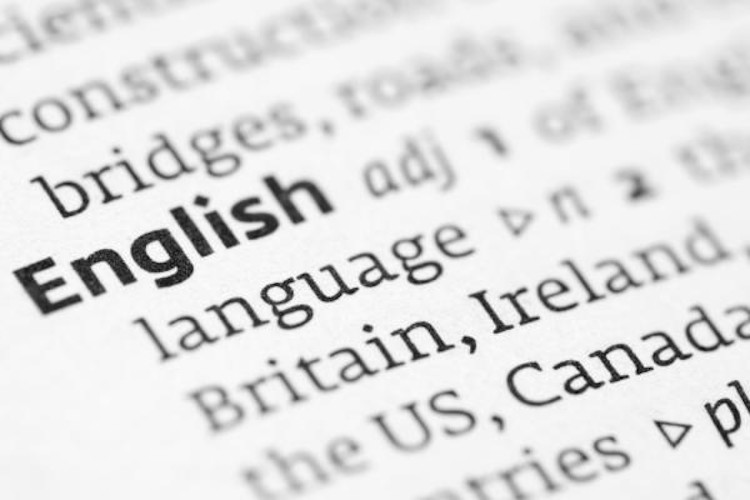Education
Cohesive Devices In English

Achieving cohesion in (English) writing goes beyond knowing so many words.
The Cambridge Dictionary defines cohesion thus: (of objects) the state of sticking together, or (of people) being in close agreement and working well together. If a speaker of English hears or reads a passage of the language, which is more than one sentence in length, he can normally decide without difficulty whether it forms a unified whole or it is just a collection of unrelated sentences (Halliday and Hasan, 1976).
Ensuring such wholeness is the essence of cohesion. That is to say, language users must conceive of their information as a text that must have its parts properly woven together. A text, in linguistics, is said to be any passage, spoken or written, of whatever length, that does form a unified whole.
Every text is expected to have texture which is the property of being a text. Just as we touch a piece of cloth to comment on its texture as being of good or bad quality, every text, too, can be tested for its texture to determine that it makes a unit of talk or piece of writing in its environment of use.
The texture of a text is, therefore, dependent on the appropriate deployment of cohesive ties. As a result, a piece of writing is said to be cohesive when the sentences and paragraphs are properly connected. The rest of this piece will discuss three cohesive ties and provide examples of them in texts.
The first cohesive device is called a reference. We talk about reference when words, instead of being interpreted semantically in their own right, refer to something else for their interpretation. This referential function is carried out by items such as personal pronouns, demonstratives and comparatives. Examples of references are shown in the texts below.
Text 1
I saw Kemi and Kunle yesterday. I guess they were going to school.
In this text, we cannot make sense of “they” except for the noun phrase “Kemi and Kunle”.
Text 2
I met only three students in class. Another joined just before I finished.
The meaning of “another” is dependent on the first encounter with “three students”.
Text 3
I was in the US sometime last month. If I have the chance, I wish to go there again.
“There” is also a referential item with its meaning linked to “the US”.
I should add that reference is of two types, namely the endophoric reference and the exophoric reference. The endophoric reference happens when the item being referred to is also in the text, as the examples above show. The endophoric reference, in turn, is of two types. When what is being referred to has been mentioned earlier, and one has to look backwards to trace it, this is called the anaphoric reference, as the examples above show (one of them is repeated below):
I saw Kemi and Kunle yesterday. I guess they were going to school.
At other times, what is being referred to might appear later in the text; such forward-looking reference is called the cataphoric reference:
I think he will make Nigeria work again. Let’s believe in Tinubu.
In the example above, we did not know who “he” in the initial sentence refers to until we encountered Tinubu in the second sentence.
The exophoric reference happens when the referent is not mentioned in the text. The exophoric reference signals that reference must be made to the context of a situation. In the popular song, “For He is a jolly good fellow,” the referent of the pronoun “he” is to be looked for outside of the song. This is a good example of the exophoric reference.
Another cohesive device is substitution. Substitution is the replacement of one linguistic item (word or phrase) with another. Substitution can be achieved nominal-, verbal- and clausal-wise. Examples of these different kinds of substitution are given below:
Nominal substitution
I want rice, beans, plantain and beef, and I think Sandra will have the same.
In the sentence, “the same” is made a substitute for the noun phrase “rice, beans, plantain and beef”.
Verbal substitution
He prepared a delicious meal, and her sister did, too.
In the second clause of the sentence, the auxiliary verb “did” substitutes for “prepared”.
Clausal substitution
Have they all left the venue?
I hope not.
The adverb “not”, in the second sentence, is used to express the belief that they could not have left the venue.
Finally, the ellipsis also serves as a cohesive device. Ellipsis is the omission or deletion of a linguistic item because its meaning is given in another part of the text. Like substitution, ellipsis can be nominal, verbal or clausal, and the three kinds will also be illustrated below.
Nominal ellipsis
Would you still have another drink?
No. This should be my last.
The noun, drink, is omitted in the response.
Verbal ellipsis
Have you eaten all day?
Yes, I have.
In this exchange, the main verb, eaten, is omitted because the sentence can be understood without it.
Clausal ellipsis
The man asked me to visit him and come with a gift.
Who?
The pronoun, who is an example of a clausal ellipsis because the question ought to have been fully expressed as: “Who asked you to visit him and come with a gift?”
This piece has shown that so much goes into making sense of both spoken and written forms of language beyond the arbitrary combination of words. The knowledge of cohesion, thus, helps us speak with better linguistic coordination and equally helps in the interpretation of language.
(c) 2023 Ganiu Bamgbose writes from the Department of English, Lagos State University.





